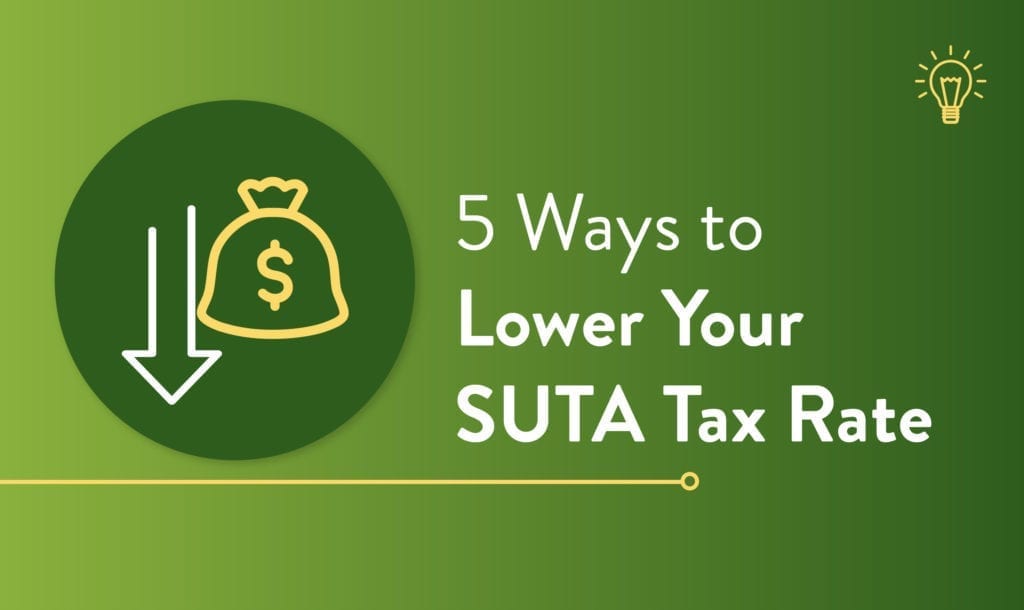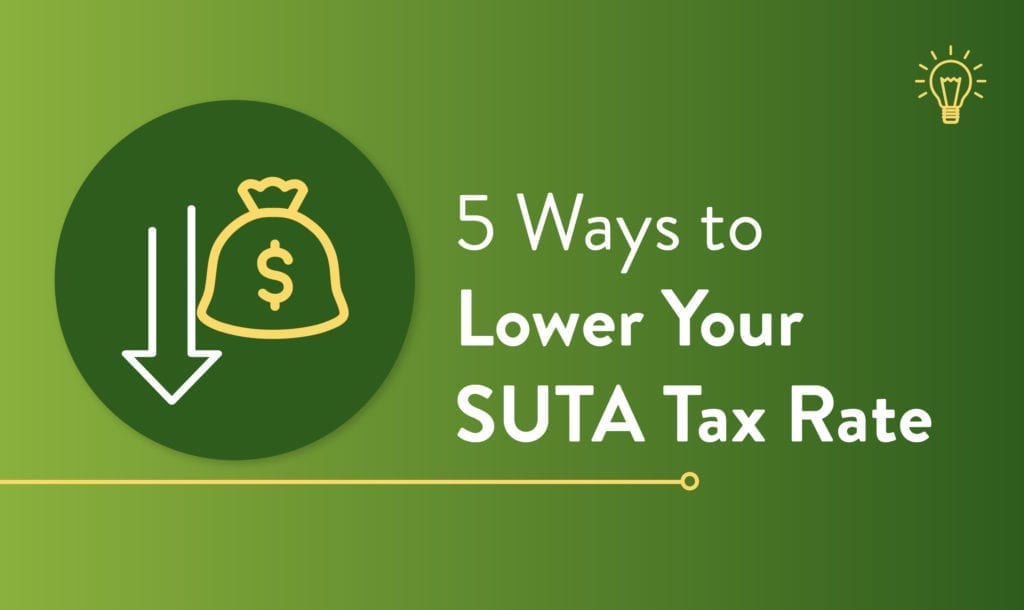
Because the State Unemployment Tax Act — or SUTA — tax is mandatory, you may think you have no control over your SUTA rate. But to some extent, you do. The first thing to remember is that each state sets its own criteria for state unemployment tax, and rates vary by employer.
Typically, new employers are assigned a standard “new employer” rate. Over time, they receive an “experience rating,” which can be higher or lower than the new employer rate. The experience rating mainly depends on how many former employees have drawn unemployment benefits on the employer’s account. The more benefits claimed on an employer’s account, the higher its SUTA tax rate. Other determinants may include whether the employer is in the construction industry and the employer’s payroll size.
You may be powerless against some of these influencers — such as your business’s age and industry — but there are other ways to lower your SUTA rate. Here are five tactics.
1. Hire only when needed.
Letting employees go because you don’t need them any more likely renders them eligible for unemployment benefits. If they file for unemployment benefits, your SUTA rate is likely to increase. So, make sure you truly need an employee before hiring him or her.
2. Help your employees succeed.
Employees terminated for gross misconduct typically do not qualify for unemployment benefits. However, employees fired for poor performance — such as due to lack of skills — may be eligible. To reduce the likelihood of terminating employees for poor performance, give them the resources they need to succeed, including proper tools and training.
3. Use independent contractors.
You can avoid unemployment claims by legally hiring independent contractors instead of employees. If you decide to take this route, ensure all mandatory requirements for independent contractor status are met, including the Internal Revenue Service’s “right-to-control” test and applicable state tests.
4. Contest dubious unemployment claims.
Dubious unemployment claims may involve former employees providing the state workforce agency with false information to obtain benefits or filing a claim even though they were rightfully terminated for gross misconduct. Before you fight an unemployment claim, consult with an unemployment benefits expert to gauge the strength of your case. Also, make sure you have supporting documents to back up your version of events.
5. Make voluntary contributions.
Many states allow employers with an experience rating to voluntarily make a “buydown” payment, which cancels all or part of the benefits charged to their account, thereby reducing their SUTA tax rate.
More tips
Consider alternatives to layoffs, such as reducing employees’ work hours via your state’s work-sharing program.
Offer departing employees a solid severance package as well as outplacement services to help them quickly find a job. This way, they will be less inclined to rely on unemployment benefits.
Keep an eye on your SUTA tax rate. If it’s spiking for unknown reasons, contact your state’s workforce agency for an explanation.
Copyright 2020









